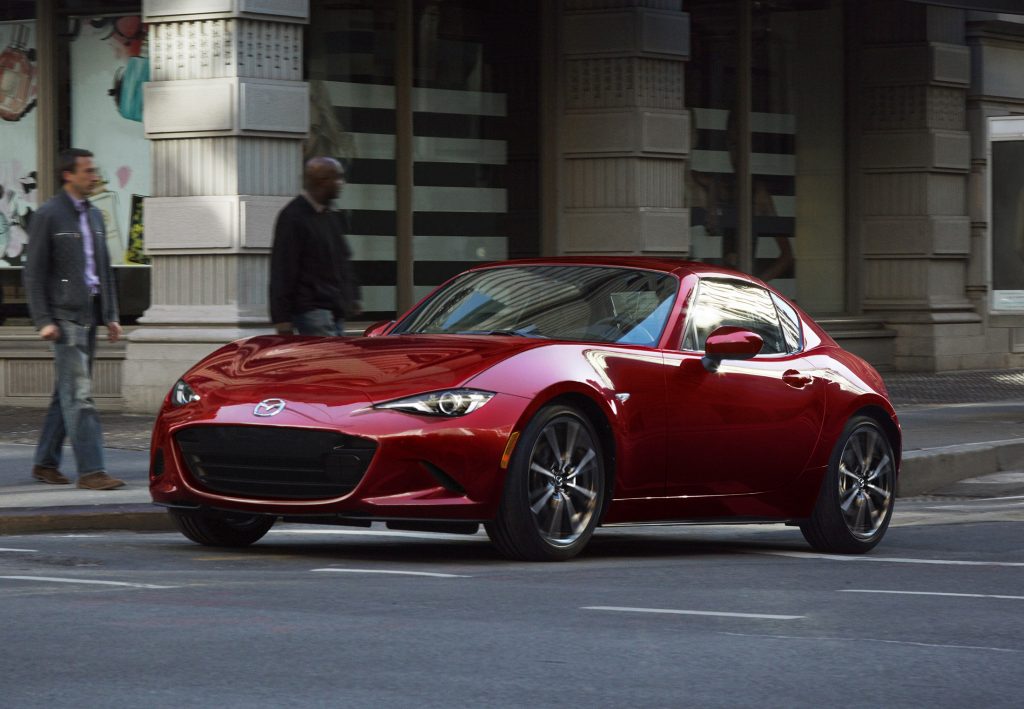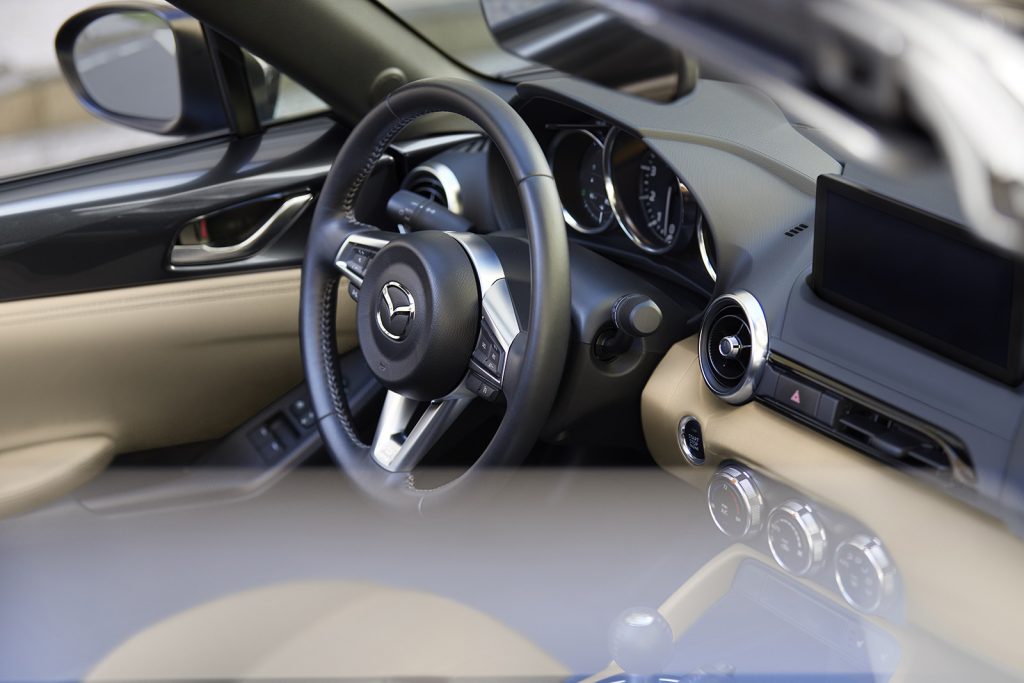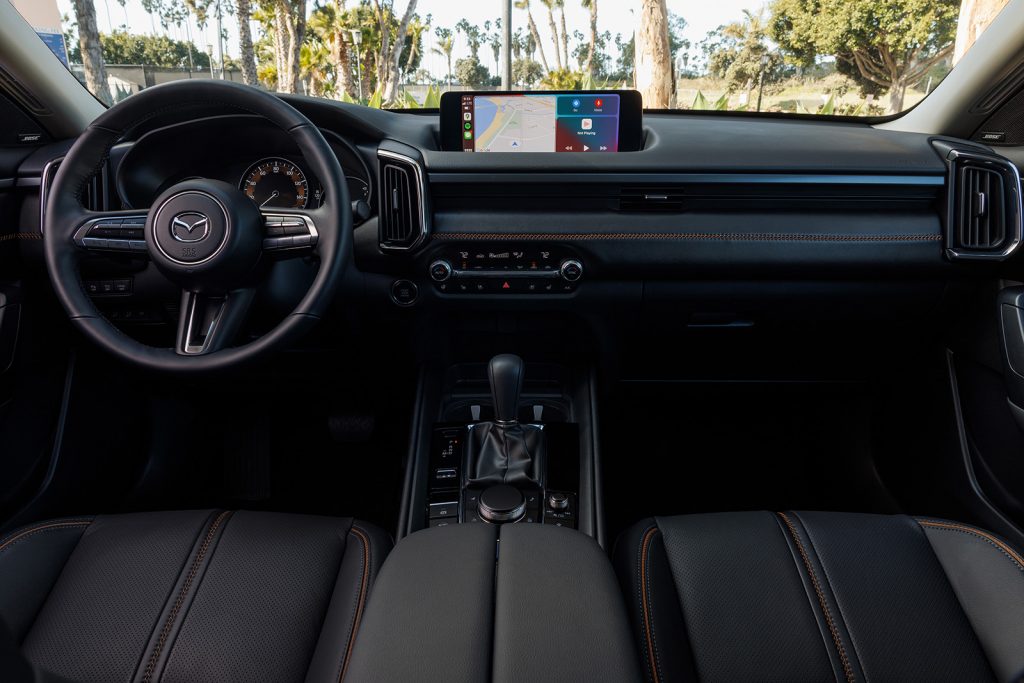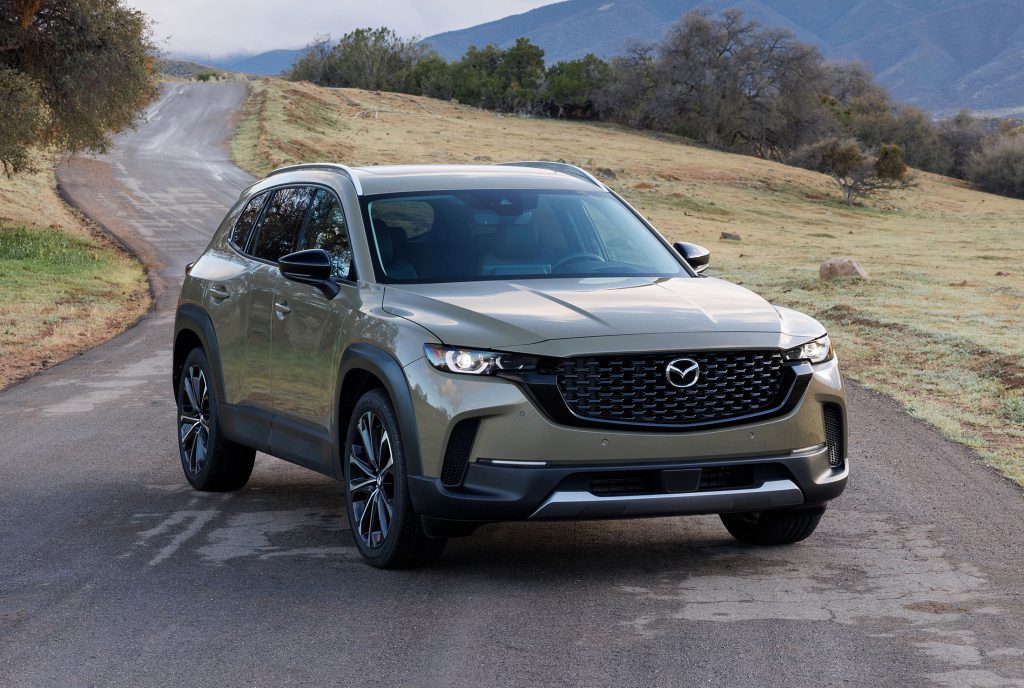Cargazing
By Derek Price
The 2025 Mazda MX-5 Miata RF represents something increasingly rare in today’s automotive landscape: a vehicle designed to excel at one specific mission without compromise.
In an era when manufacturers chase broader appeal through added size, luxury and convenience features, Mazda has steadfastly refused to dilute the Miata’s essential character — a commitment that has created one of the most enduring sports car formulas in automotive history.
Behind the wheel, the connection between driver and machine feels immediate and organic.
The Skyactiv-G 2.0-liter four-cylinder engine produces 181 horsepower and 151 pound-feet of torque, with a thrilling 7,500 rpm redline.
These figures sound modest on paper but feel perfectly calibrated for the lightweight chassis.
Power delivery is linear and predictable, building smoothly through the rev range while the six-speed manual transmission offers crisp, precise shifts that encourage frequent gear changes and redline chases.
What truly distinguishes the Miata from virtually every other sports car is its ability to make ordinary drives feel special.
The steering weight builds naturally as speeds increase, providing genuine feedback about road surface and tire grip. The suspension strikes an ideal balance between comfort and control, absorbing road imperfections while maintaining the taut responses that make canyon roads irresistible.

The latest Miata maintains the classic roadster proportions while the retractable hardtop adds versatility without compromising the car’s clean aesthetic lines.
The RF (Retractable Fastback) variant tested here addresses one of the traditional roadster compromises.
The power-folding hard top transforms the driving experience dramatically, creating a quiet, refined cabin when closed that makes daily driving genuinely pleasant.
Road noise drops to civilized levels, eliminating the fatigue associated with soft-top convertibles during longer journeys. When opened, the top stows cleanly without compromising the car’s elegant proportions.
As someone who has owned a 1994 Miata for years, I can see that the fundamental appeal of this formula remains unchanged. That first-generation car captured something magical about the pure sports car experience — lightweight construction, perfect balance, and an almost telepathic connection between driver and machine.
The joy of rowing through gears, feeling every nuance of the road surface and experiencing the mechanical symphony of a naturally aspirated engine never grows old.
After decades of driving that original car, it’s remarkable how Mazda has preserved those essential qualities while adding modern refinement.

The Miata’s purposeful cabin places the driver at the center of the experience, with intuitive controls and a low seating position that enhances the connection between car and driver.
This current generation represents the finest evolution of the original concept since that 1989 debut. Rather than succumbing to focus group demands for more size, power or luxury, Mazda has refined the fundamental formula through their philosophy of kaizen — continuous improvement.
Interior space remains tight by conventional standards, but every surface feels purposefully designed rather than compromised. The driving position places you low and centered, with major controls falling naturally to hand.
Material quality exceeds expectations for the price point, though luxury amenities remain minimal by design — exactly as they should be.
Few modern vehicles manage to feel like living, breathing entities rather than sophisticated appliances.
The Miata achieves this connection through careful engineering and unwavering commitment to its core mission. It represents automotive purity in an increasingly complex world, continuing a 35-year tradition of making every drive an event worth savoring.
At A Glance
WHAT WAS TESTED?
2025 Mazda MX-5 Miata RF ($40,650). Options: Premium paint ($595). Price as tested (including $1,185 destination charge): $42,430
BY THE NUMBERS
Wheelbase: 90.9 in.
Length: 154.1 in.
Width: 59.2 in.
Height: 49 in.
Engine: 2.0-liter four cylinder (181 hp, 151 lbs. ft.)
Transmission: Six-speed manual
MPG equivalent: 26 city, 34 highway
RATINGS
Style: 10
Performance: 7
Price: 9
Handling: 10
Ride:5
Comfort: 3
Quality: 9
Overall: 10
WHY BUY IT?
The 2025 Miata delivers an uncompromised sports car experience that prioritizes driver connection and pure enjoyment over everything else.




